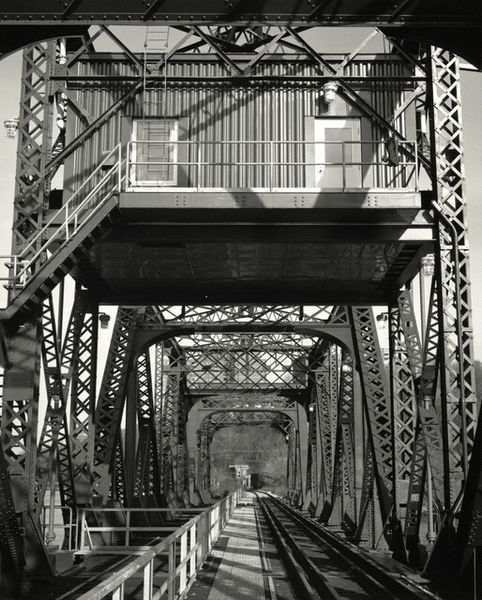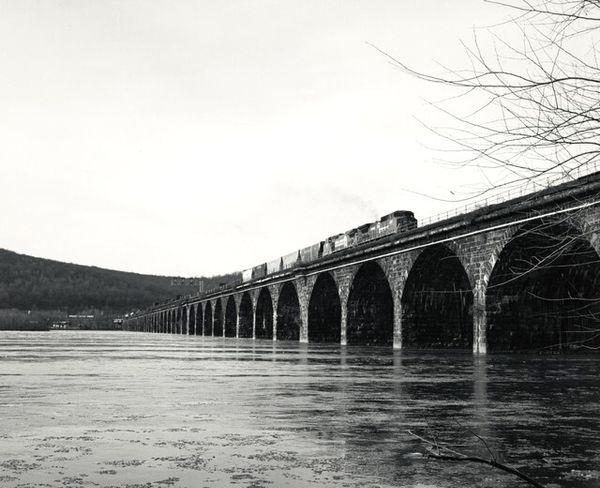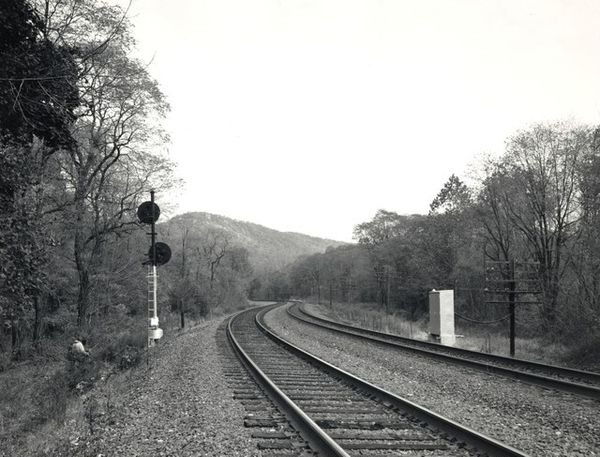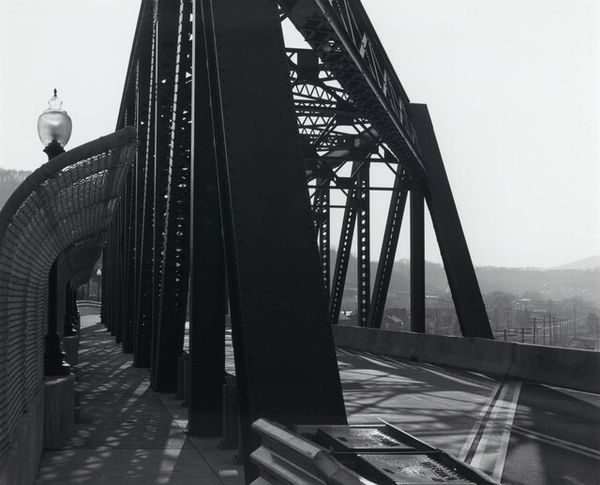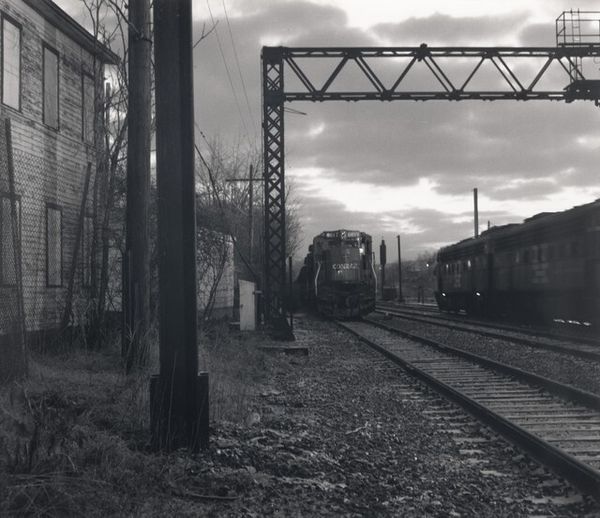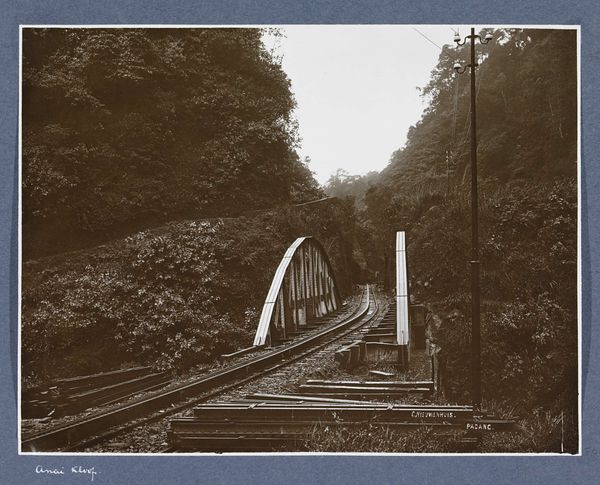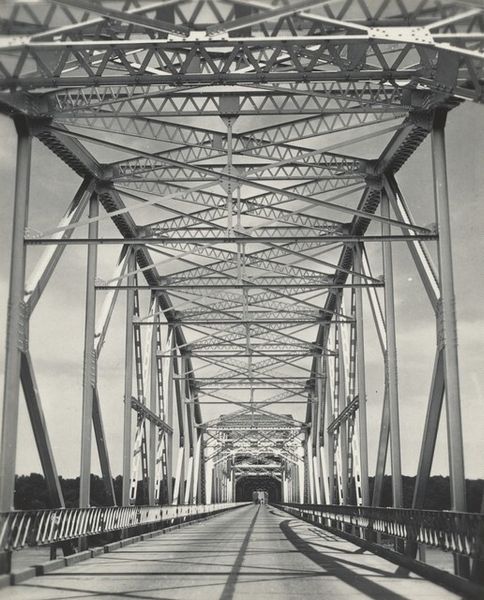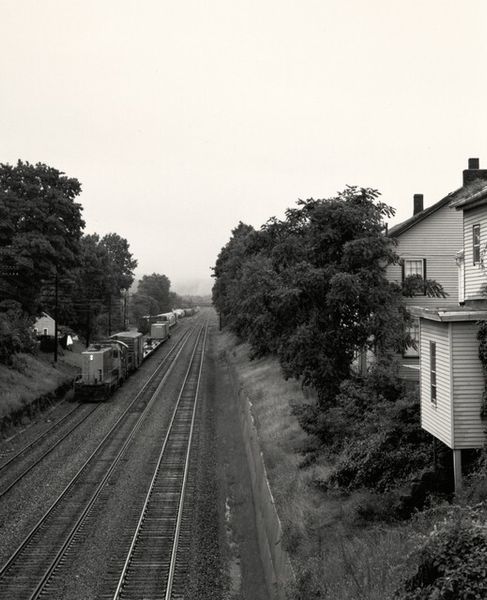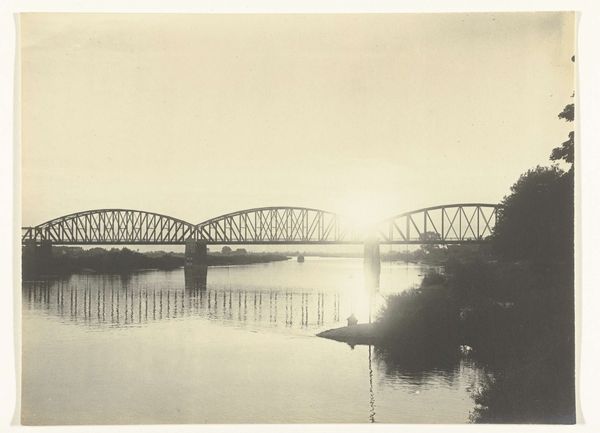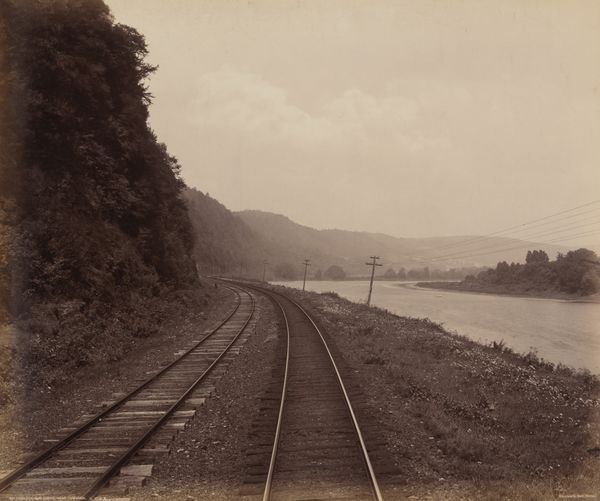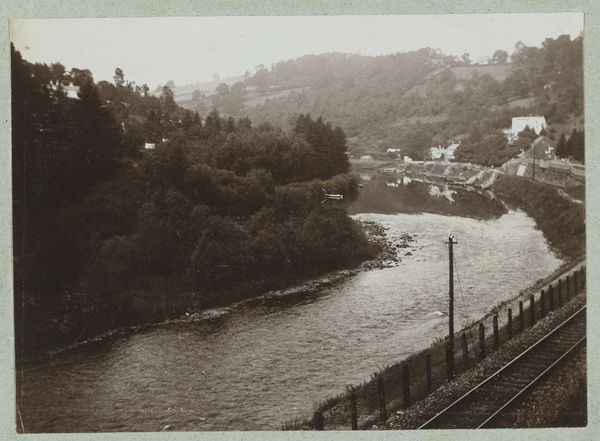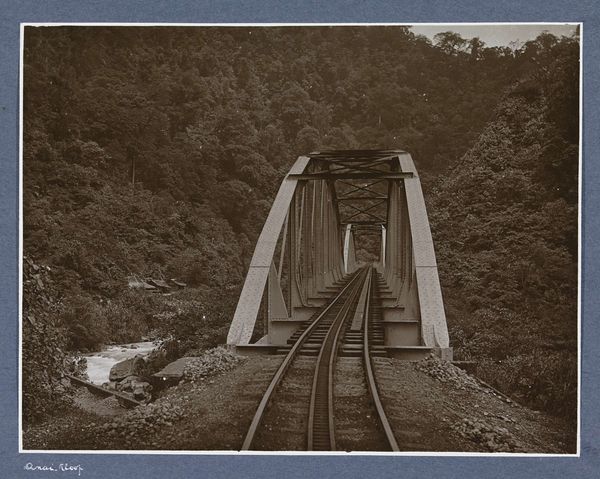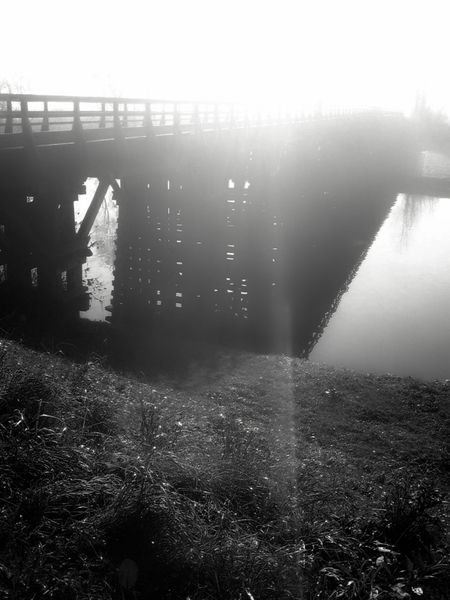
Route 40 over the Monongahela River, Brownsville, Pennsylvania 1 - 1993
0:00
0:00
photography, gelatin-silver-print
#
landscape
#
outdoor photograph
#
photography
#
gelatin-silver-print
#
monochrome photography
#
cityscape
#
monochrome
#
monochrome
Dimensions: image/sheet: 48.9 × 58.8 cm (19 1/4 × 23 1/8 in.) mount: 50.8 × 61 cm (20 × 24 in.)
Copyright: National Gallery of Art: CC0 1.0
Editor: We’re looking at James Welling’s black and white photograph, "Route 40 over the Monongahela River, Brownsville, Pennsylvania," created in 1993. I find it rather bleak, almost melancholic, yet the geometric composition of the bridge, train, and river is compelling. What do you see in this piece from a historical perspective? Curator: The photograph, rendered in stark gelatin-silver, offers a poignant commentary on the socio-economic landscape of post-industrial America. Welling's choice of Brownsville, Pennsylvania, isn’t arbitrary. The town's history is deeply intertwined with coal mining and steel production. How does the visual contrast between the industrial infrastructure and the natural landscape strike you? Editor: There’s a clear juxtaposition, the rigid bridge contrasting with the flowing river. The coal train emphasizes industry but somehow suggests its dependence on natural resources, a sort of cycle. Curator: Exactly. The image prompts us to consider the environmental and social costs of industrial progress, as well as the institutional forces that drove these economies. The abandoned or underused infrastructure often became monuments to faded glory. Do you see elements in the composition which suggest decay? Editor: Yes, the lack of activity around the railway, the muted tones… it all conveys a sense of decline. The heavy blacks of coal cars contrasted against muted grays underscores its themes. Curator: It makes you think, doesn’t it? About what’s left after these industries fade and what roles places like galleries play to preserve or change how these landscapes are perceived. The image invites questions of preservation, memory, and the complicated relationship between communities and the environments that support them. Editor: This has made me think differently about landscape photography; it's not just scenery; it can also reveal social and economic forces at play. Curator: Absolutely. Art provides a window into history and culture, reflecting both our achievements and our struggles.
Comments
No comments
Be the first to comment and join the conversation on the ultimate creative platform.
